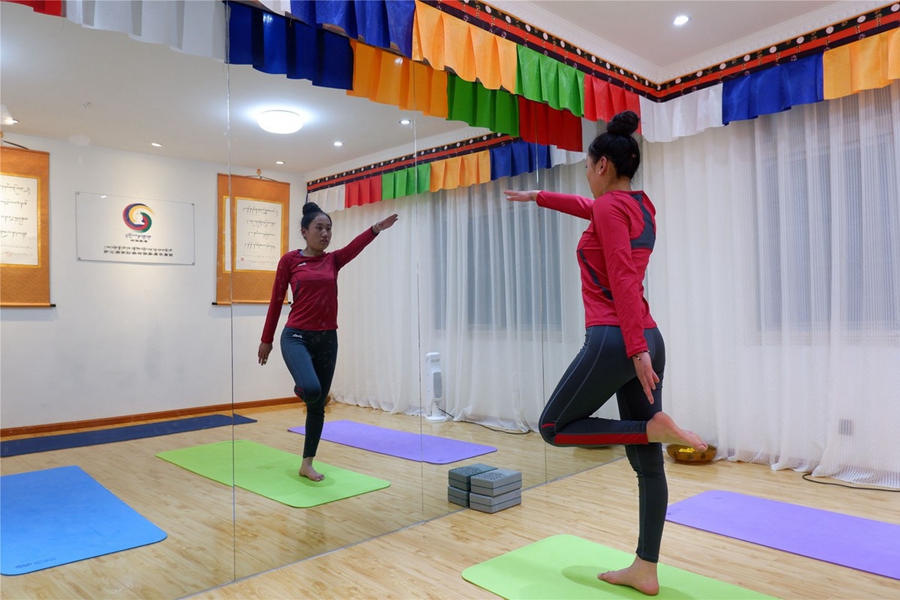
Tsering Palmo practices Tibet's native Shangshung yoga at her studio in Lhasa, Tibet autonomous region, this month. LI LEI/CHINA DAILY
Dressed in leggings, Tsering Palmo bent down, and twisted her body into a compact shape. Then, she hopped forward like a frog on a yoga mat in her studio, which overlooks a mosaic of diners and milk tea houses dotting the bustling streets of Lhasa, capital of the Tibet autonomous region.
Minutes later, she sat cross-legged in a Buddha-like posture and suddenly bounced up and down in a series of gravity-defying movements.
"These are the most typical moves in Tibet's native Shangshung yoga," said the 23-year-old, her eyes focused on her reflection in a mirror.
Measuring only a few square meters, the studio she runs with two partners in a three-story complex in the east of Lhasa offers a revolutionary view of yoga.
In China, mainstream yoga has long been known as a set of health-preserving practices imported from ancient India, and with a rapidly expanding global reach. It has impressed people with its instantly recognizable slow, gliding moves-as seen in movies, television commercials and brochures that advertise numerous studios hidden in residential communities and busy streets nationwide.
But its Tibetan relative, which features frequent displays of incredible strength, is barely known outside a limited number of hardcore fans. Even members of the Tibetan ethnic group, who traditionally take pride in their unique culture, are often unaware of it.
"I had never heard of it, nor had my friends, until I took it on as a career in June," said Tsering, whose lack of knowledge does not reflect the time she spent living and studying in Tibet and East China.
The Shangshung culture is widely believed to have laid the foundations for Tibetan culture in the pre-Buddhist era. Practitioners of its style of yoga are required to foster a range of physical and mental habits, including conscious control of everyday speech and communication, emotions and sleeping postures, in addition to mastering up to six separate breathing techniques.
Tibetan yoga also has a strong astrological slant, and advocates the mystical "five elements" theory, which attempts to guide people's exercise by establishing connections between the movements of the celestial bodies and the functions of the human body.
Tsering and her partners have 15 students, hailing from several age and ethnic groups in Lhasa. Each pays 888 yuan ($127) for 13 sessions a month, with each lesson lasting about 90 minutes. Occasionally, tourists seeking relief from the hustle and bustle of city life via a temporary stay in the regional capital will attend a couple of classes.
|






7740f3b5-9ecb-438e-9052-76cb2d4bb671.jpg)

